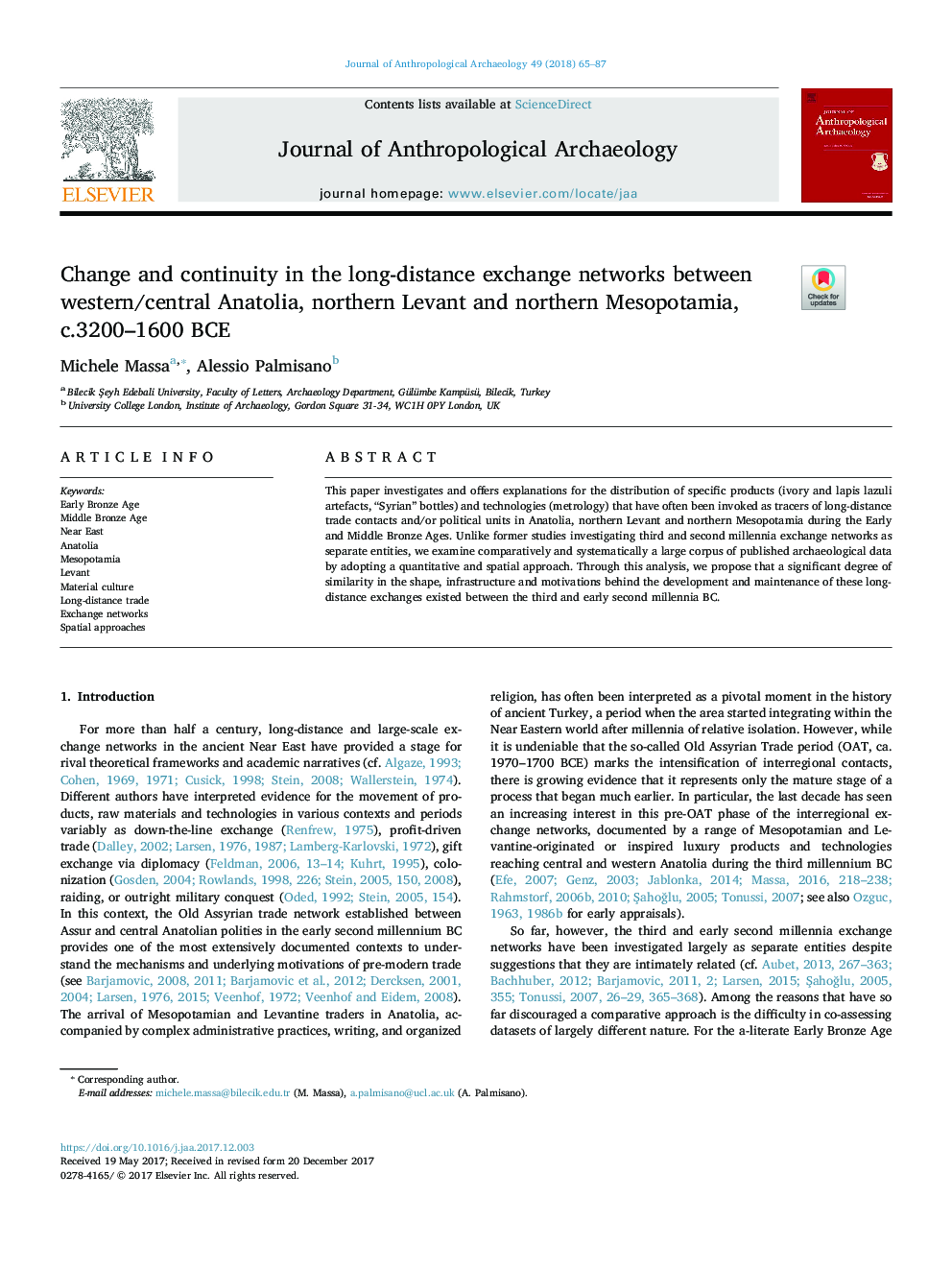| Article ID | Journal | Published Year | Pages | File Type |
|---|---|---|---|---|
| 7440438 | Journal of Anthropological Archaeology | 2018 | 23 Pages |
Abstract
This paper investigates and offers explanations for the distribution of specific products (ivory and lapis lazuli artefacts, “Syrian” bottles) and technologies (metrology) that have often been invoked as tracers of long-distance trade contacts and/or political units in Anatolia, northern Levant and northern Mesopotamia during the Early and Middle Bronze Ages. Unlike former studies investigating third and second millennia exchange networks as separate entities, we examine comparatively and systematically a large corpus of published archaeological data by adopting a quantitative and spatial approach. Through this analysis, we propose that a significant degree of similarity in the shape, infrastructure and motivations behind the development and maintenance of these long-distance exchanges existed between the third and early second millennia BC.
Keywords
Related Topics
Social Sciences and Humanities
Arts and Humanities
History
Authors
Michele Massa, Alessio Palmisano,
